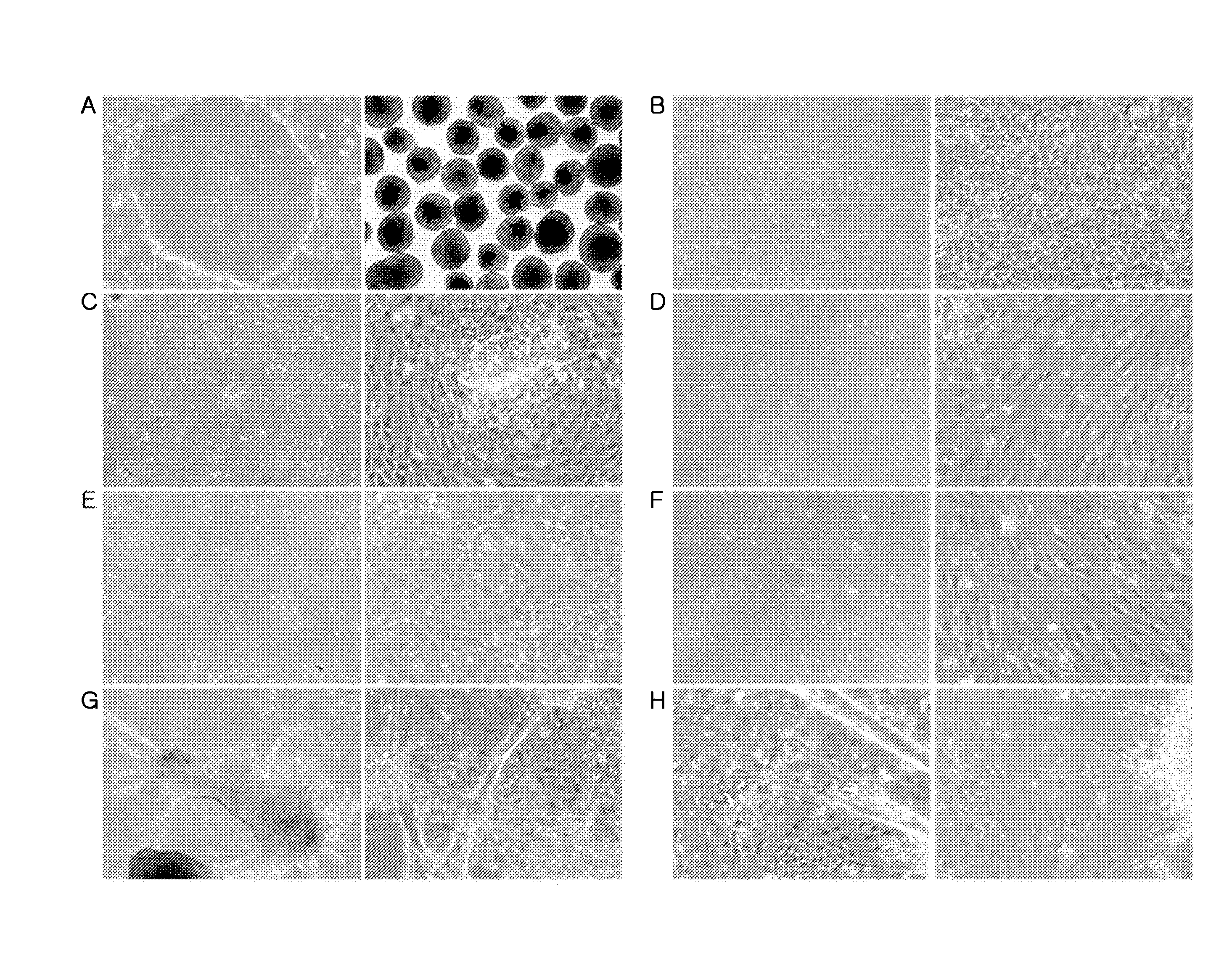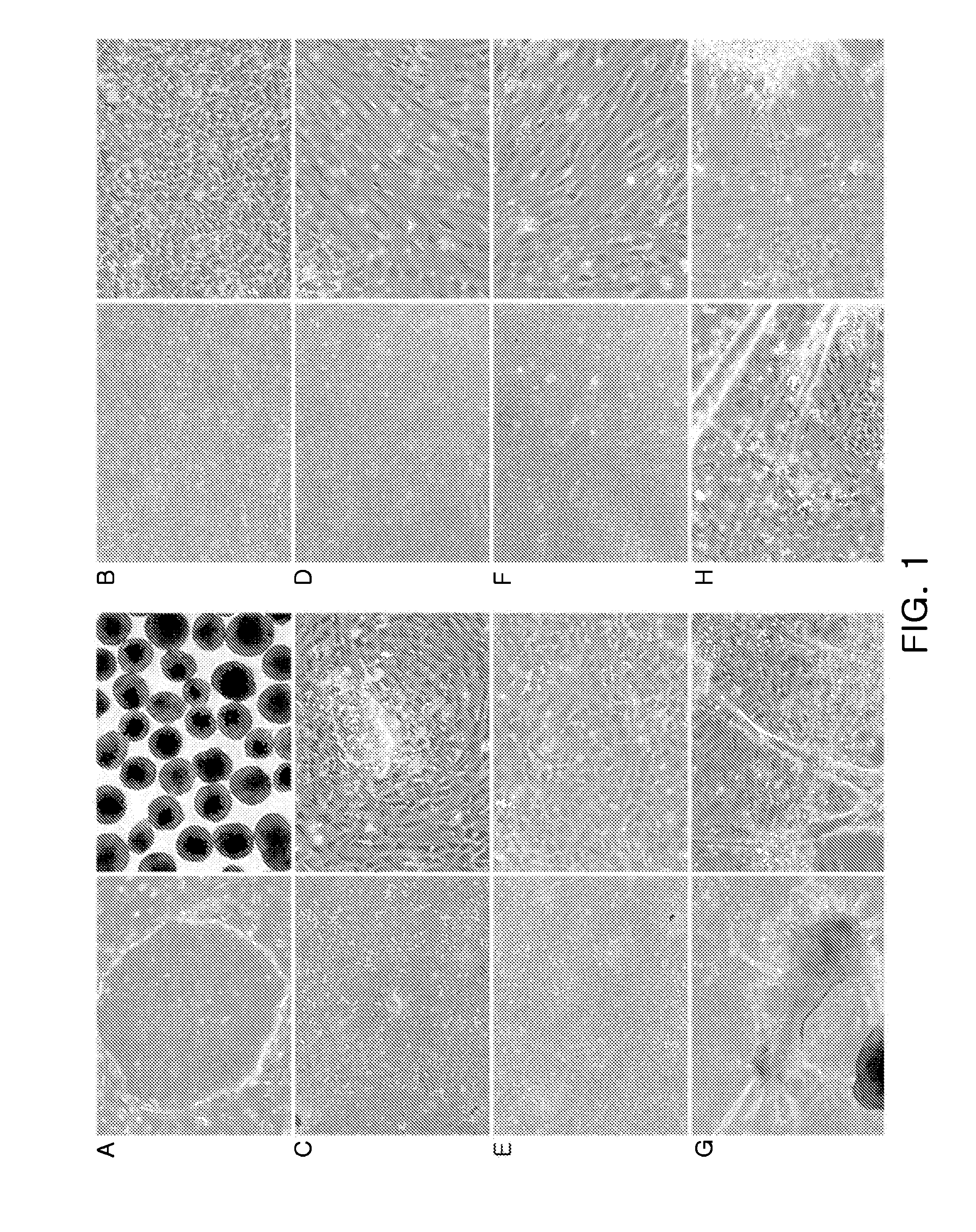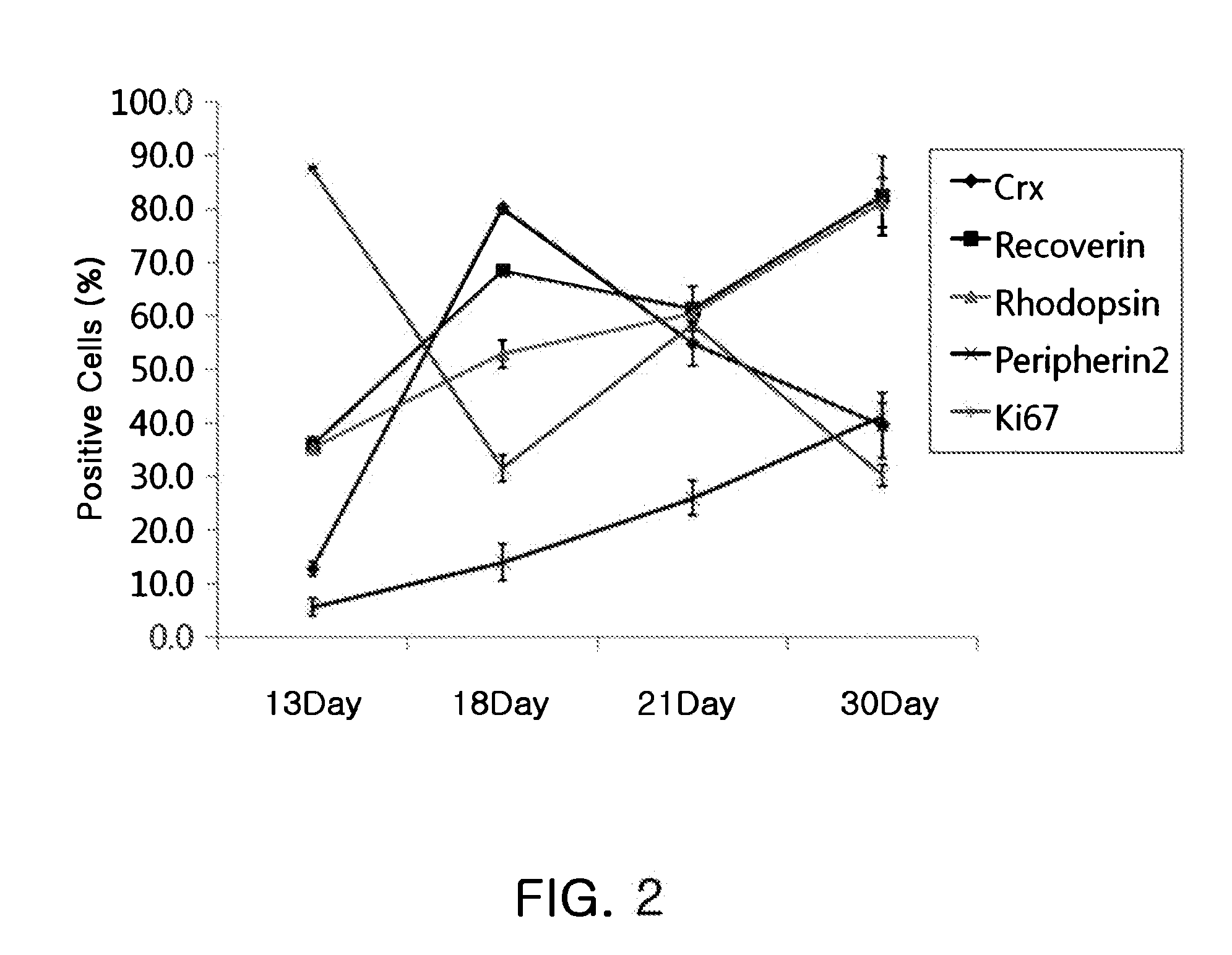Method for differentiation into retinal cells from stem cells
- Summary
- Abstract
- Description
- Claims
- Application Information
AI Technical Summary
Benefits of technology
Problems solved by technology
Method used
Image
Examples
example 1
Culture of Stem Cells
Culture of Human Embryonic Stem Cells
[0270]The human embryonic stem cell (hESC) lines H9 (WA09, normal karyotype XX) and H7 (WA07, normal karyotype, XX) were purchased from the WiCell Research Institute (Madison, Wis., USA).
[0271]The hESCs were allowed to proliferate undifferentiated (H9 cells: passages 25˜33; H7 cells: passages 23˜28) by culturing over feeder cells, such as radiated mouse embryonic fibroblasts (MEF, ATCC, Manassas, Va., USA) or mitomycin-treated mouse embryonic fibroblasts (EmbryoMax Primary Mouse Embryo Fibroblasts, Millipore, Billerica, Mass., USA) in the following medium: DMEM / F12 (Invitrogen, Grand Island, N.Y., USA), 20% (v / v) KnockOut serum replacement, Invitrogen, Carlsbad, Calif., USA), 1 mM L-glutamine (Invitrogen), 0.1 mM nonessential amino acids (Invitrogen), 0.1 mM mercaptoethanol (Sigma-Aldrich, St. Louis, Mo., USA), and 4 ng / ml human recombinant basic fibroblast growth factor (FGF2, Invitrogen).
[0272]While the medium was replaced...
example 2
Differentiation from hESCs or Human iPSCs into Eye Field Precursors
[0278]The hESCs or human iPSCs cultured in Example 1 were separated from the MEF cells (FIGS. 1 and 14) and seeded into 6-well ultra-low attachment plates (Corning Incorporated, Corning, N.Y., USA).
[0279]To the hESCs or human iPSCs in the 6-well ultra-low attachment plates was added a medium for inducing differentiation into eye field precursors [DMEM / F12, 10% KnockOut serum replacement, 1 mM L-glutamine, 0.1 mM nonessential amino acids, 0.1 mM mercaptoethanol, 1% B27 supplement (Invitrogen), 1 ng / ml recombinant noggin (R&D Systems), 1 ng / ml recombinant Dkk-1 (Dickkopf-1, R&D Systems), and 5 ng / ml recombinant IGF-1 (insulin-like growth factor-1, R&D Systems)]. The cells were cultured for 4-5 days to generate eye field precursors in the form of floating aggregates with the replacement of the medium with a fresh one every third day (FIG. 1).
example 3
Differentiation from Eye Field Precursors into Retinal Progenitor Cells
[0280]The eye field precursors (floating aggregates) generated in Example 2 were seeded at a density of 53±8 cells per well (292±53 cells / floating aggregate) into 6-well poly-D-lysine / laminin-coated plates (BD Biosciences) and at a density of 12±4 cells per well on 8-well poly-D-lysine / laminin-coated plates and then cultured for 9 days to generate retinal progenitor cells, with the supply of a medium for inducing differentiation into retinal progenitor cells [DMEM / F12 (Invitrogen), 1 mM L-glutamine (Invitrogen), 0.1 mM nonessential amino acids (Invitrogen), 0.1 mM mercaptoethanol (Sigma-Aldrich), 1% B27 supplement, 1% N2 supplement (Invitrogen), 10 ng / ml Dkk-1, 10 ng / ml noggin, 10 ng / ml IGF-1, and 5 ng / ml FGF2].
PUM
| Property | Measurement | Unit |
|---|---|---|
| Fraction | aaaaa | aaaaa |
| Time | aaaaa | aaaaa |
| Time | aaaaa | aaaaa |
Abstract
Description
Claims
Application Information
 Login to View More
Login to View More - R&D
- Intellectual Property
- Life Sciences
- Materials
- Tech Scout
- Unparalleled Data Quality
- Higher Quality Content
- 60% Fewer Hallucinations
Browse by: Latest US Patents, China's latest patents, Technical Efficacy Thesaurus, Application Domain, Technology Topic, Popular Technical Reports.
© 2025 PatSnap. All rights reserved.Legal|Privacy policy|Modern Slavery Act Transparency Statement|Sitemap|About US| Contact US: help@patsnap.com



